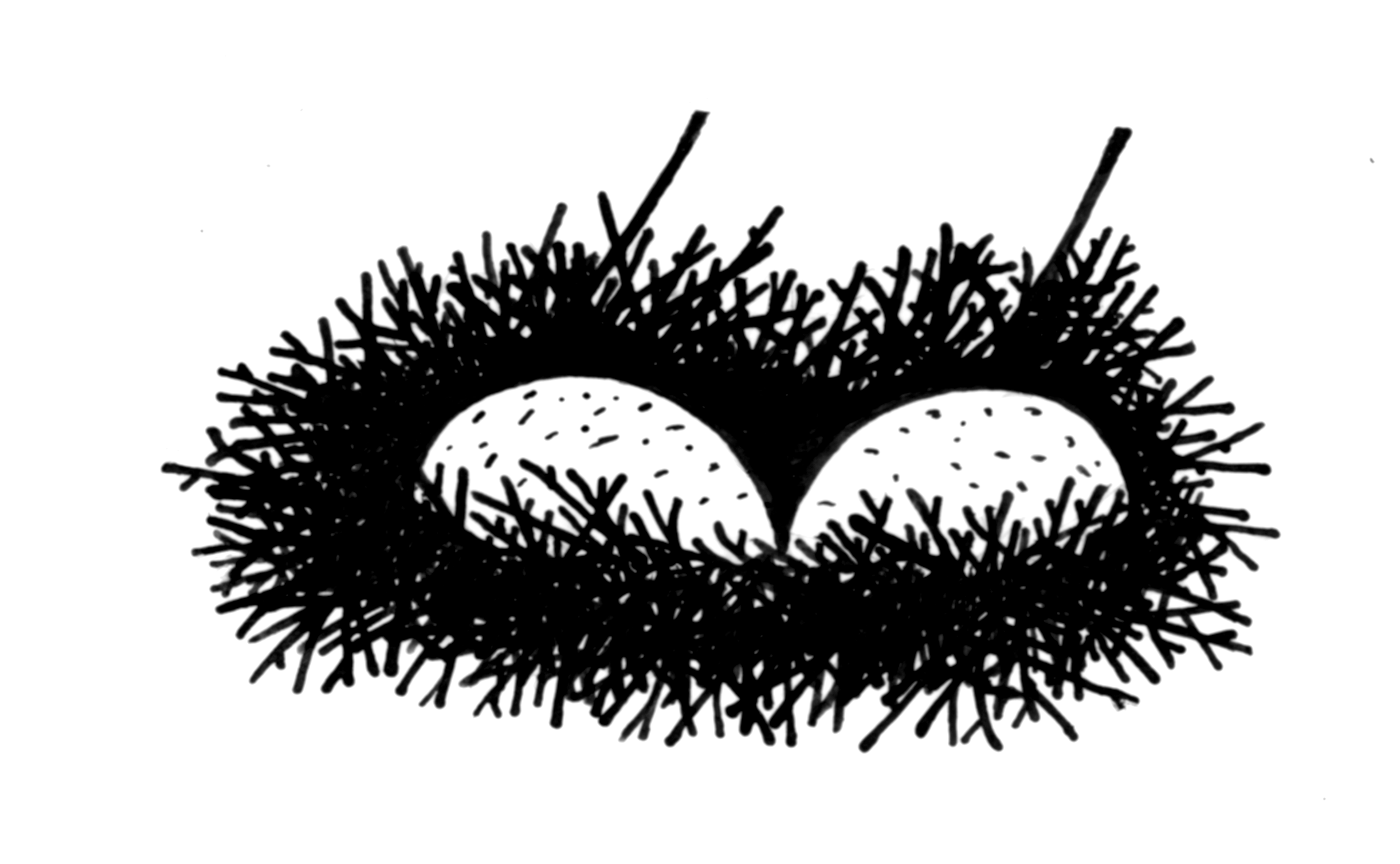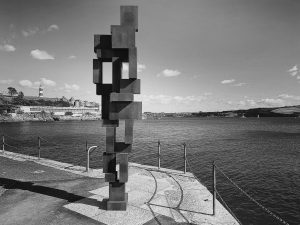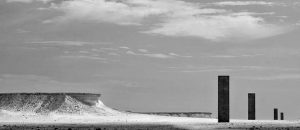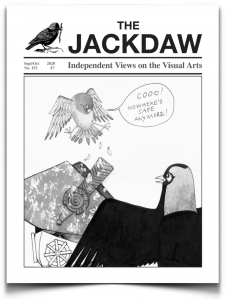Artbollocks
Plymouth Ho Ho Ho
The Gormless sculpture recently unveiled on the waterfront in Plymouth is twice life size, weighs three tons and is made of cast iron which will be left to rust, rust being à la mode. Part of the contract with the sculptor says that the price paid can’t be divulged, which is slightly unusual considering public cash is involved. Many locals of course believe that whatever it cost it was too much. The only reason the price is kept secret is because it will seem to be extortionate whatever it is. The blue-rinsed genius himself is either embarrassed at what he charges, or he’s keeping it secret so he can later charge other customers even more, or perhaps less if he has a few gathering dust on the shelf. The local mayor claims the work is “world class”, “epic” and capable of “creating wonder”, presumably because that’s what Sir Anthrax told him to say. He also came out with the usual drivel common on these occasions that it would “put Plymouth on the map”, from which previously it been blackballed. We’ve heard all this said about works of public art before – haven’t we just. There was the infamous occasion when Dr Quack, now of the Tate, described three chromium bollards near Maine Road in Manchester as “a world class work of art”. Of course it was a porkie then and it’s an even bigger one now. So unimpressive is it no one even notices it.
Your patience is now rewarded. Here is what Gormless himself had to say: “The work links the ancient stones of the Stonehenge era to modern skyscrapers”. It’s short but you’ve got to laugh, eh? He added: “I’ve always been drawn to the sea-board as a place of interface between stability and chaos, or the known and unknown.”
A Pile of Steaming Scouse
The Liverpool Biennial, which runs from March to June and for which we all can’t wait, is called ‘The Stomach and the Port’ and its commissioning and programme outWokes the most ardent Wokeism to date. It is all the work of a Mexican lady who knows a thing or two about Liverpool and loves nothing more than to scoff a steaming dish of vegan scouse. So, erewego…
“The Stomach and the Port explores [!] notions [!] of the body and ways of connecting with the world, drawing on non-Western ways of thinking and challenging [!] an understanding of the individual as a defined, self-sufficient entity. Instead, the body is seen as fluid and without limits, being continuously shaped by and actively shaping its environment.” After reading that bollocks you can be in no doubt who’s paying for this farrago; and yes, that means you. As soon as you encounter ‘exploring and challenging notions’ you just know the writer has graduated cum laude from the Arts Council’s Press Release Writing Course (Advanced), where Rule 1 reads: “Make sure that anything you write will mean nothing whatsoever to any other human being either now or in the future.”
A Line in the Sand
State Art is like a virus, it knows no boundaries and spreads like wildfire. In fact, it’s worse than a virus because once it’s arrived you can’t get rid of it because there’s seemingly no cure. And there are plenty of students actually volunteering to contract it. And national boundaries are no protection for it spreads by telepathic brainwashing. This leads to many curious anomalies. Why, for example, should peoples of different cultures and traditions, all as equally rich as our own ‘western’ one, be interested in the brand names of State Art? A good example of this is currently doing the rounds. This piece (above) by Richard Serra comprises four large slabs of metal, each 45 feet high, spread over a thousand yards of a nature reserve in Qatar. A nature reserve! How could anyone in that country believe that an Arab population could possibly see and understand this as a “breathtaking national asset”. One can only conclude that the proliferation of State Art has caused a global pandemic of acute self-delusion. The reason why East/West West/East is in the news is because it’s being cleaned of graffiti. Authorities in Qatar are appalled that locals can’t understand the sculptures’ world significance. It was unveiled in 2014 and the artist hoped it would become a landmark, as if everywhere needs a landmark. Surely this is the fate of anything at all you might plonk in an expanse of desert.
As an addict of the sweeping non-sequitur, Serra has clearly been listening in while Gormless, occupying the next hotel room, practices in front of the mirror. He said: “I attempt to use sculptural form to make space distinct… What that piece does is give you a point of reference in relationship to a line, and your upstanding relationship to a vertical plane, and infinity, and a personal relationship to a context – and pulls that context together. It makes it graspable. That’s actually a place out there now, and there certainly wasn’t one before. We did that simply by putting up four plates.”
Talk about stating the bleeding obvious. You could make the same claim for a line of telegraph poles.
Overlooking the conceit of an artist prepared to inflict his lack of imagination on a nature reserve… was it Moore or Caro who said “More often than not sculpture spoils landscape”?
Mrs Margi Doonham of Nottingham visiting her sister, a naval widow, said it was “absolute rubbish and spoils the view” and that her “three-year-old grandson could do better blindfold and handcuffed”.
Roger Hiorns exhibits a scattered pile of charred ash in this year’s Turner prize. Apparently, it’s the remains of a jet engine pulverised in some way. We have to be told what’s going on, or we’ll be none the wiser from looking, and that job was handed to Helen Little: “The starting point for Hiorns’s practice arises from an internal psychological position, from connecting with materials independently of their real use and interfering with their worldliness.” She continues: “As statements about the current human imagination, and engaged with the future evolution of our perceptions of form and matter, Hiorns’s configurations of highly selective substances transcend their material presence to question our interpretation and sense of the world.”
The Jackdaw Jan-Feb 2010
A regular reader and friend of The Jackdaw recently forwarded the following piece of artbollocks. He wonders if this is the earliest example of the genre, and we have to agree that it is certainly the earliest we’ve ever published. Of course it is not as early as Reynolds’s Discourses, which for the most part is unreadable twaddle, and (dare we suggest it) Turner’s lectures on perspective, which the little genius must have drafted in stormy weather on the Margate Packet after eight pints of sack. Anyway, this is quoted by Robert Hughes in his book on Barcelona. It is a review of a Maeterlinck play by Ramon Casellas: “… such is the formula of this nebulous and shining art, chaotic and radiant, prosaic and sublime, sensuous and mystical, refined and barbaric, modern and medieval…” If nothing else it is the earliest known occurrence of Borlandbollocks.
The Jackdaw May 2008
The first and last, right and left, alpha and omega and top and bottom of Borlandbollocks in good old black and white… Here’s The Guardian’s Adrian Searle coming on all contrasty about Peter Doig’s daubs: “In the centre of this faded and indeterminate iridescence, a sort of receding memory of place and colour, is a yellowish Rorschach inkblot on legs, with a body like a pressed flower or butterfly as much as it is like a bat. It is an absence and a presence, a mute apparition. It’s as though it stares back across the whole of Doig’s career, and appears to be both an end and a beginning.”
The Jackdaw May 2008
The Union Gallery in SE1 is a new one on us but their staff have obviously come through the Arts Council’s Fast-Track Bollocks NVQ with flying colours. “Abandoning the structural artifice inherent in narrative, Mike Marshall’s practice brings to the fore that which would normally inhabit perceptual peripheries, or be omitted entirely. Here, through sustained sensory engagement with half-registered moments in unspecific locations, the process of reception is distended, the viewer moving into a deeper, less complacent, more physical relationship with what is seen and heard. Full reign [sic] is given to the implication that under certain perceptual circumstances what often appears to be ‘dead-air’, a non-event, or prolonged pause in the drama of reality, can become almost too intense: moments in which we are incontrovertibly invested in a reality anterior to language.”
The Jackdaw March 2007
Following an extended period in the Bollocks wilderness, Milton Keynes Gallery return to the fold. Stephen Willats’s boring pseudo-sociology masquerading as art gets another outing at public expense. Here is the latest official interpretation of what this superannuated idiot does: “At the heart of Willats’ practice is the encouragement of the active participation in a work of art by collaborators and viewers, in order to stimulate an engagement in their own creative process.” Alongside Willats’s diagrams is Panacea Goes Cycling, an exhibition by a threesome: “The Panacea group will survey Milton Keynes for artistic solutions to cultivate their mobile maquette of an idealised health paradise, which mutates and evolves with each exposure to a new environment. Once fully grown, these ideas will inhabit the public spaces in and around the town.” Bring back the concrete cows.
The Jackdaw Jul-Aug 2007
Thanks go to the half-dozen readers who sent in this gem from the newly opened Arnolphony, the Arts Council’s Bristol franchise. It relates to their opening exhibition and they took special care over the words in order to get people in: “Returning to a place once familiar, now changed, or imagining how a place will look before you get there often results in looking at things in the present, but remembering or imagining the past.” Now that, my dears, is the Arts Council at its best: complete and utter bollocks.
The Jackdaw February 2006
And now for what is possibly our first contribution sent all the way from Boston – Mass not Lincs. Here, a fool called Regales Megalakos describes the results produced by her (?) strenuous curating in Relative Diversions: “Suzanna Coffey is known mainly for her portraiture, However though her face is undeniably hers, the spectator would do well to see more than just that, since she paints beyond her identity origin and beliefs. In essence she does not paint her self-portrait, but only uses her self as a model. In their ‘painterliness’ her works reveal their power of contrast between the background and foreground, accentuated by the expression of the face, which responds to its painted context… Suzann Walters’s works have the hallucinatory effect of dreams, in which the time/space continuum is annihilated. Though emitting a Disney-like feel, the protagonist figures in her art are original outcomes of her imagination. The mysterious and impressively exotic environment, owed to the rich colour and the ample light on the gloss surface, reflects an eerie feeling of anthropomorphic ambiguity.”
The Jackdaw April 2006
Interpreting something “in a number of lights” is a little like Borlandbollocks. It gives options, boxes to tick, parameters of antipodean width to span. Everybody has something to praise, nobody is disappointed. Numbers of lights is the process by which whatever you are exhibiting, however banal, not only can be made to mean but be said to mean whatever you like. The lights are, after all, as numerous as you feel disposed to make them. Here, then is the Centre of Attention in light-numbering mode: “This multi-dimensional show can be seen in a number of lights; as an art prize, a group show, an installation, a spectator participation performance, a celebration of democracy and idealism and a critique of democracy and idealism.” And let’s face it that’s quite a lot of lights.
The Jackdaw February 2005
Mandy McIntosh has been given a residency by the Scottish Arts Council. In its own words: “I am an artist who makes eclectic works of documentation which utilise aesthetics and medium as host for meaning within sometimes site specific and socially engaged procedures.” It that guff isn’t bad enough she moves into overdrive: “Generally speaking I work from a reactionary taste impulse … in Tasmania, I made a series of crocheted gorilla balaclavas … in New York I am researching vultures, meteors and The United Nations.” It’s only your money.
The Jackdaw February 2005
We should like to submit the conception, execution and especially the catalogue of the current Serotaland exhibition ‘Open Systems: Rethinking Art c. 1970′ as the purest manifestation of artbollocks. It’s a well-known fact that a colon in the title is a harbinger of boredom and and artbollocks in equal measure, and we’re not disappointed here. In this case the bollocks is courtesy of exhibition curator Donna De Salvo. De Salvo talks bollocks for England. And how. We’ll leave you to consult the catalogue yourself – just open it at any page. In what must be the most tedious exhibition ever conceived, De Salvo finds “challenges’ everywhere. In what is her third challenge in as many rooms, she refers to an installation of Marcel Broodthaers as “challenging traditional ideas about museums’. Broodthaers’ “challenge” was obviously a miserable failure as it ended up in a museum despite itself.
The Jackdaw Jul-Aug 2005
Since its new director flounced in from the Tate, the Whitechapel has been beefy big on bollocks. Its current exhibition is part of an “ongoing programme strand”: “Shahin Affrasiabi highlights the importance of painting for all the sculptors in Early One Morning by displaying his ‘still lives’ of household and industrial materials. Using pots of paint, carpets and slabs of aluminium, Afrassiabi evokes a history of abstraction and emphasises the constructed and and presented nature of all art.” bollocks. Meanwhile: “Claire Bailey combines notions of the organic and the synthetic in her work. Materials such as thread, leather and rubber are used for their plastic and aesthetic qualities as sculptural components in a return to abstraction, formalism and craft.” The person who dreamed up this rubbish was on a roll … “Jim Lambie references popular culture, in particular music, in his work, drawing on the materials of his everyday life. Using such ephemeral materials as record covers, safety pins and glitter, Lambie creates fetishistic artefacts and exquisite multi-coloured floors expands the parameters that define space and form.” Honestly though, where would we be without the Blazwicks of this world blathering for Britain? The catalogue accompanying the show has one of those interviews with each artist, each page a wall of bollocks. Here’s another artist, Eva Rothschild: “I’m interested in un-systems of belief, non-systems, in how people move their ‘spiritual’ desires between different objects and traditions. Also how certain places and things can have a spiritual power which specific belief doesn’t necessarily exclude. I’m interested in the ways of looking that go with concepts of faith and in how things are invested with a power above and beyond their materiality, the transference of spirituality on to objects. That’s where sculpture comes in, making something that seems to have something extra to what is physically there. I’m interested in thinking about why we feel an object has more than a material presence and in the idealism of belief.” She’s interested in so many things there’s 112 pages of this guff. Will anyone read all 112 of them? This is our conceptual nomination for this year’s Turner Prize. Will anyone ever read all 112 pages?
The Jackdaw September 2002
We like this one not because it’s bollocks but because it includes three bollocks buzzwords, “investigates”, “questions” and “explores”. If they’d included “interrogates” and “subverts” they’ve have scored the artbollocks equivalent of the royal flush. It was Spacex, our old friend the Arts Council franchise holder in Exeter: “Ariana investigates that relationship between landscape and history. It explores ideas of utopia and resistance, questioning the tools of cinema and western ideas of viewpoint and panorama.” Still, three out of five’s not bad in only 27 words.
The Jackdaw Jul-Aug 2003
If it’s the fourth Sunday of the month it must be Marc Quinn’s turn for a puff in the Sunday supplements. He dutifully obliged with several hundred words of measured bollocks, the introduction of which was this: “All my work is about what it is to be a person alive in the world. And with being embodied.” He’s obviously been listening too intently to that other White Cube bollockiste, Gormless.
The Jackdaw Jul-Aug 2003
No bollocks column is complete without the obligatory entry from White Cube. The latest duffer up for the cup is Martin Richie: “This installation is an introduction to a fragmentary narrative based around his own history and the geology and myths of the United Kingdom integrated in to an environment made up of separate elements, paintings, light boxes, wall drawings and large-scale topographical wall works effecting an overwhelming retinal blow-out – a kind of visual and mental overload of light, colour and information.” Ashley Bickerton was showing at the same time. We learn that a woman featured in one painting, though not one of the “hallooed cultic figures”, is “taught and emotional”, while the description of the same work concludes with the sentence: “Bickerton’s exotic is necessarily impure and psychotropic.”
The Jackdaw November 2001
The old ones are the best. Here’s Alfred Hickling scribbling about Marc Quinn in The Guardian: “The caster-sugar surface of the glistening Carrara marble dignifies rather than degrades its subjects, making challenging reference to the notion of perfection and the conventions of classical beauty.” Challenging? Bollocks! And here’s The Observer’s account of the same Quinn ‘carvings’: “What is questioned is not so much the standard of human beauty as the idealised values and conventions of art.” Questioned? Bollocks! And here’s another courtesy of the Tate itself: “Quinn’s detailed and pristine sculptures carved from Carrara marble refer to the classical tradition of sculpture yet subvert this by questioning the notion of the heroic and the beautiful.” Subvert? Question? Bollocks!
The Jackdaw April 2002
Since we identified Borlandbollocks as a sub-species of guff a couple of years ago, it has developed into a growth area the size of a cult. Now it’s been dubbed with a name, one spots the phenomenon everywhere. This is Peter Davies, a young painter apparently, describing precisely what it is about Jackson Pollock’s One (Number 31) that tickles his fancy: “I like the way it’s full of contradictions [This sounds very promising! Ed] It’s angry and aggressive, yet beautiful and sensitive. It’s heavy but light. It’s expressive yet controlled, complex yet simple, crude yet articulate. For such a severe and tough method, the result is surprisingly delicate and elegant.” Five point nines across the board there, for what must henceforth rank as a textbook demonstration.
The Jackdaw May 2001
Welcome back to dear old Tracey, whose every utterance is twaddle. Here she is, in full spate rhapsodising bollockly in the Independent on Sunday: “I couldn’t fucking believe it when I got here [Saatchi Gallery] the other day and saw what these guys from Momart had done. I mean they’d fucking gone and installed the work without me even being there. That’s just not on. This is my bed. If someone else installs it, it’s just a dirty bed. If I do it, it’s art… You know, I was in the same room as Mrs Thatcher the other day and I didn’t want to spit on her any more. I looked at her and I thought: you poor, wizened, fucking old shrew. And I thought about my own power and sovereignty and how much I wanted to get the hut back (from San Francisco) and I thought: now I can do it; now I can sell my work to Charles Saatchi.”
The Jackdaw November 2001





